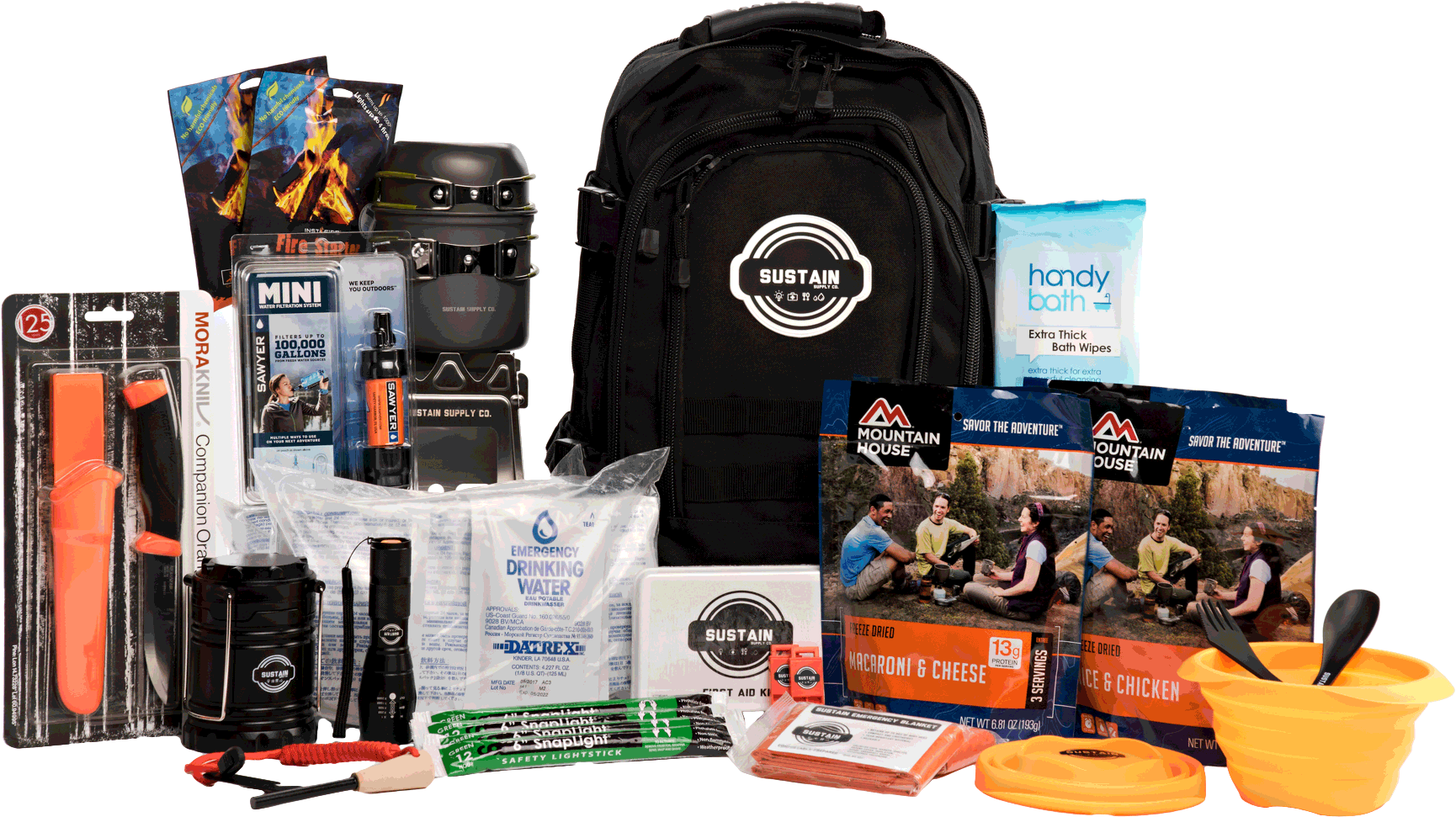Orders Over $100 SHIP FREE START SHOPPING NOW
Error: Contact form not found.
Orders Over $100 SHIP FREE START SHOPPING NOW
Five to nine hurricanes are expected to form in the Atlantic Ocean this year alone.1 In total, 11-17 named storms are expected in the Atlantic Basin this year.1Are you and your loved ones prepared? Whether it’s a Category 1 or a Category 5 hurricane, it’s imperative to have all of the necessary supplies to survive the first 72 hours after a storm. Don’t wait until your local meteorologist issues a hurricane warning. Start planning now by building a hurricane emergency kit.
Hurricanes are powerful storms and at times deadly. Keeping your loved ones safe during the storm is your top concern, and that’s why it is critical to build and maintain a hurricane preparedness kit. If you don’t want to risk depending on shoddy equipment during an emergency, a premium, pre-built kit may be a solution. However, if you are looking to create your own emergency survival kit for hurricanes, here is a step-by-step guide:
1. Determine how many people you need to prepare for. Depending on your situation, you may have additional guests riding out the storm with you such as elderly relatives. Emergency kits and backpacks are often created to contain enough supplies for between two to four people.
2. Find a durable backpack or duffle bag to store all of your emergency supplies and gear. We recommend using a backpack to help even out the weight distribution, and this will make it easier to transport the bag should you need to evacuate.
3. Fill your kit with enough non-perishable food and water for each person in the household for three days (72 hours). Keep in mind that you may need to use the water for sanitation purposes as well. Additionally, we recommend packing a water filtration system that can provide you with the ability to safely purify new sources of water.
4. Pack a portable stove so that you can heat up food or water without electricity. If a severe hurricane does strike, it’s possible that power lines will become damaged, knocking out the primary source of electricity in your area.
5. You won’t want to eat food with your fingers, so don’t forget to include bowls and utensils in your kit.
6. Pack a few different light sources that will help you make it through any scenario. We recommend:
Light sticks are great, because they provide reliable illumination from up to a mile away and are not dependent on batteries.
7. Pack emergency blankets to stay comfortable when sleeping, should you find yourself in a less than ideal sleeping arrangement. In the event of a hurricane evacuation, hotels may be sold out requiring you to make alternate short-term arrangements for sleeping, like staying in a shelter.
8. Make sure to find and pack a well-built knife. There are too many uses for a good knife to name, but suffice it to say that you don’t want to be left without one.
9. Pack a ferrocerium rod and tinder. Ferrocerium is an alloy material that produces sparks when struck, making it very easy to start a fire when you don’t have any other source to do so. Tinder, such as the InstaFire® that we include in our pre-made kits, will ensure that you have a dry material to turn the sparks from your Ferrocerium rod into fire. Although it may seem like there is a lot of material around that you could use for tinder, during a Hurricane, it’s likely that most of this material will be wet and less likely to light.
10. Make sure you have a battery-operated or hand crank radio in your kit, just in case the power goes out.
11. Place a first aid kit in your emergency backpack. It’s not uncommon to sustain injuries while evacuating from a hurricane or cleaning up from the aftermath. Make sure your first aid kit contains the following items:
12. Add a whistle to your kit. This may come in handy if you need to signal for help.
13. Include bath wipes in your kit as well. Taking a bath may not be an option right after a hurricane lands.
14. Don’t forget to include a spare cell phone charger in the kit too. Keep your cell phone charged before the hurricane makes landfall. You never know if or how long the power will be out.
15. Find out if you live in an evacuation area. If you do, locate the closet emergency shelters near to your home. Keep in mind when researching shelters that not all of them accept pets.
16. Put a local map in your emergency kit in case you have to evacuate the area.


Our 72-hour emergency kits get you 90% of the way to being totally prepared. Our kits include:
In addition to the supplies listed above that are included in our kit, it’s also important to customize the kit to fit your unique needs. Gathering the following items will help to complete your kit:
To prepare fully for a hurricane, experts also recommend that you fill your gas tank before a hurricane arrives.
Helping to keep you and your loved ones safe is our top priority. Below, you will find a list of resources that can help before, during and after a hurricane including keeping track of a storm, staying updated with the local weather forecast, creating an emergency plan for your business and more.
National Hurricane Center
Ready.gov
National Weather Service
Federal Emergency Management Agency
Emergency Plans for Businesses
American Red Cross
1 http://www.noaa.gov/media-release/above-normal-atlantic-hurricane-season-is-most-likely-year